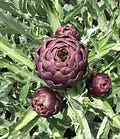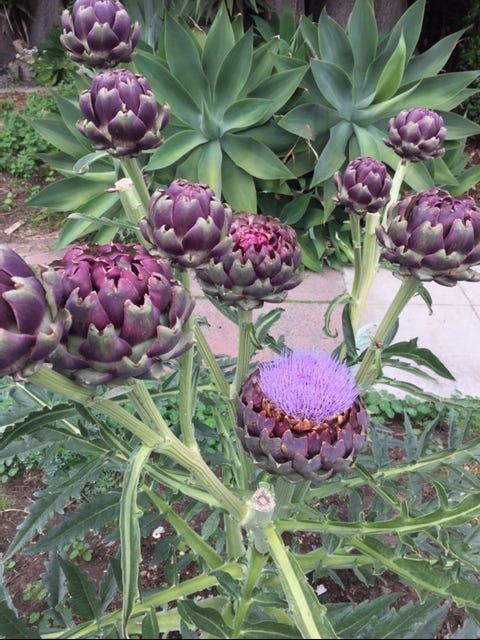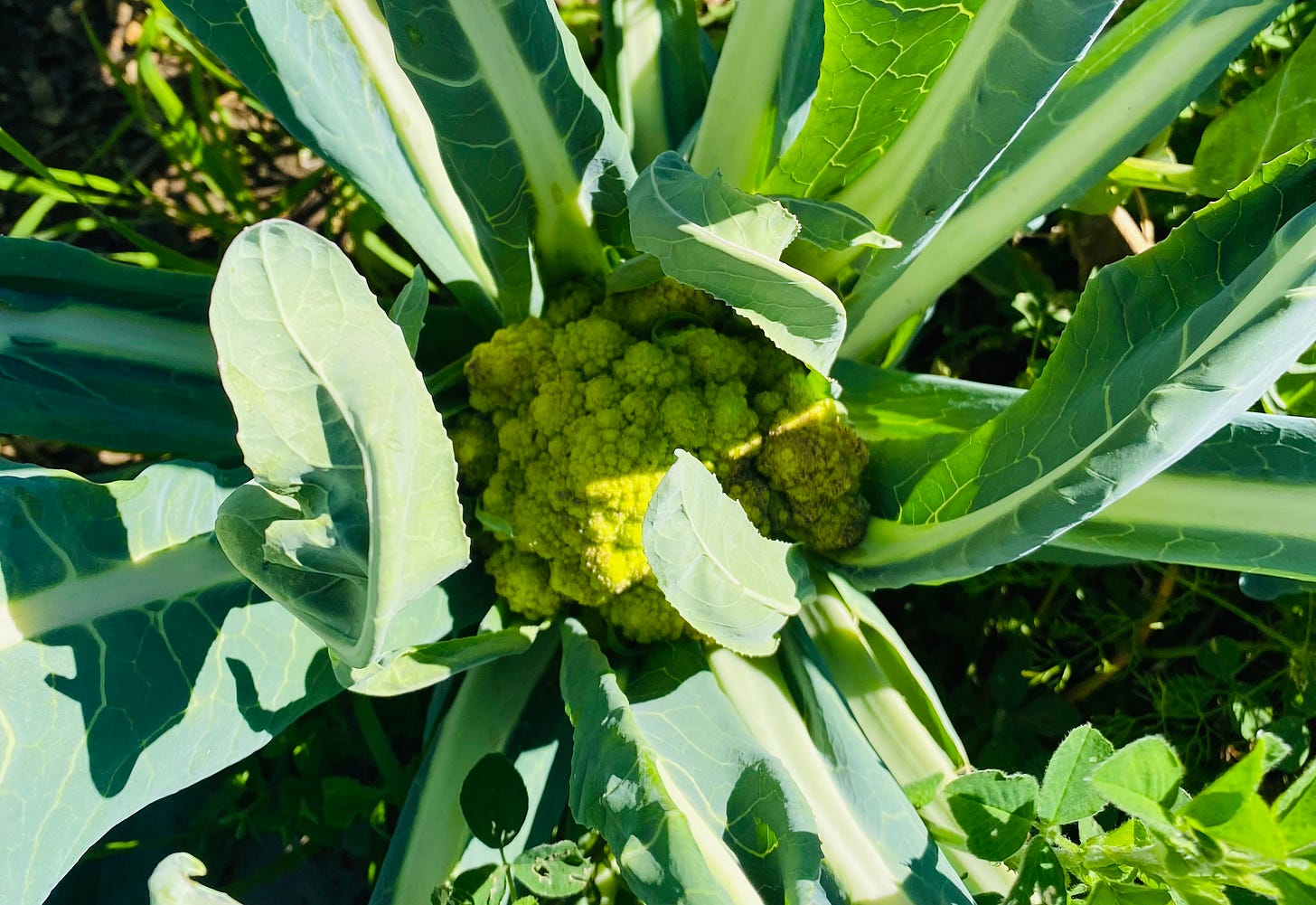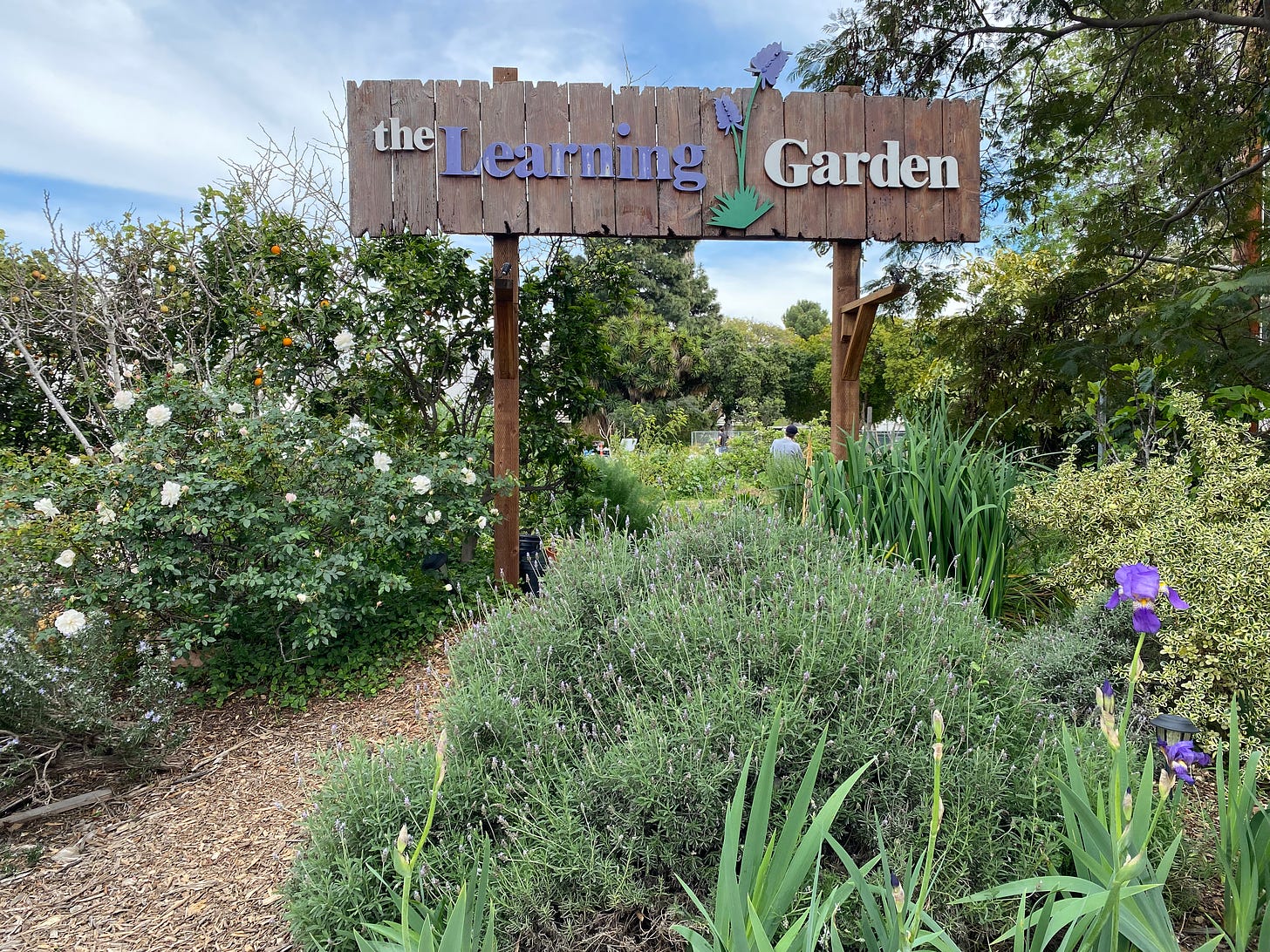Introduction to Artichokes
By David King
I had a decision to make. I had dug up some plants and with not so much space to transport them, I was resisting being talked into more. Craig Ruggless was moving this week and he had invited me over to take as many artichoke plants I could handle and here I was digging up plant after plant on a coolish kind of day (thank God), trying to get as much of the root as I possibly could on each plant to help it live until situated. Craig had worked for years to hybridize this artichoke, and I didn't want the project to come to an end. I was eager to be a part of this adventure.
Craig was moving from California to the East Coast, which is NOT an artichoke climate. I wanted them all, of course. Like many other gardeners, I suffer from Gotta Have NOWism. That was tough. It was going to take some time; gardener's wannabees need to read that over again. Gardening takes more than its share of patience. (“Patience is also a form of action...” someone wise somewhere said. I believe them.)
At the garden, with a fog, we compete well with the temperatures at Venice Beach, but usually we are just a little warmer and artichokes will want that extra heat. Try very hard to plant them in full sunshine for your best results.
Most artichokes are propagated from root division, which has proven to be reliable and easier than seeds. Plant them early and often (although late summers are hard on artichokes, you might divide your main plant, pot up the babies into one gallon pots each and grow them more shaded than you would usually have these plants).
We can grow artichokes easily enough from seeds, but the problem would be in saving those seeds without introducing an other, unwanted genetics into these plants. You don't want to deal with the sheer amount of space a healthy artichoke plant can take without even giving you one choke! This was very heady; entrusting me to a radically different, mostly unknown plant...
I was trying to find out how artichokes propagate in the wild.
A couple of the artichokes were put in The Learning Garden, where they performed very well. However, at some point, which plant was what plant got into the discussion. We couldn't tell and my notes weren't giving up the secret. If we couldn't agree on the living plants of this generation, we could probably ID them from their growth pattern and color. If one hoped for the best. This one (me) hoped too.
There were two plants that scored high on all the criteria we had seen in the first plants we planted. They were vigorous, had a strong purple center and produced a lot and good artichokes. To avoid AWOL plants, I brought these home where I kept an eye on them. In November, a second plant sprouted (no help from me, it just did the right thing). Three weeks ago, the two plants were re-united with the earth; placed in a bed at The Learning Garden, where it grows mostly anonymously.
Artichoke plants are not fooling around when they sprout; they need to be divided. They can engulf a small homestead with ease; don't turn your back on them. As the original plant grows, soon enough it will produce another generation at the base of next years' crop. In our climate they grow pretty much all year round and produce most of their edible parts in hotter weather, so planting them a little later in Spring, hurts nothing. A cup or of diluted fish emulsion in the first and second season far enough apart, time-wise, needs to have enough Nitrogen throughout the growing season.
These are large plants, and, unless well tended, they don't perform so well. Overfeeding plants does little good and sometimes great harm. They can drink a lot of water, but don't overdue it, excessive water in the center of the plant can cause a rot that is definitely not something you want to deal with.
Once you have artichokes you'll never need to walk alone. Every artichoke will give birth to a new generation if you don't screw up by forgetting to water, each plant will give you two or more new plants for the coming year.
Late Winter Harvest | Prep For a New Season
In the culinary gardens, we’ve been harvesting peas, lettuce, carrots, cauliflower, but the star of the month has been romanesco broccoli. Its name is misleading, though, Romanesco is not broccoli at all. Its closest relative, in taste and texture, is cauliflower. Discovered in 16th century Italy, romanesco is an edible flower bud of the species Brassica oleracea.
I’ve always regarded romanesco as a rare supermarket find. Usually, around this time of year, they pop up in the produce section. But never consistently. They have a distinct light green coloring, although a recent heatwave taught us that it can also take on a vibrant purple hue when exposed to too much heat - still delicious.
The seeds for these stunning, large (they can grow up to 3 feet tall), plants were started all the way back in September! Slow to start, they really took off when transplanted early November. Though they only produce a single head, a shape approximating a fractal - luckily the leaves are edible as well. The months paid off though, there’s nothing like freshly grown romanesco cauliflower from the garden.
Now we’re making way for the new season. Harvesting what’s left of the winter crops and preparing for spring/summer.
Tea Garden Project
Did you know that both green and black teas grow from just one species of camellia? Camellia sinensis. Or that bee balm can be added to black tea the achieve the Earl Grey flavor? There’s so much to learn about tea and how to grow your own. But we need your help!
Donate, any amount counts, and help make all of our locally grown tea dreams a reality. Let us know in the memo, leave a comment, or reply: What kind of tea is your favorite?
We need your support to help us reach our goal - looking forward to hopefully having tea with you this summer!






